8 Lucky Foods for Chinese New Year and Their Meanings
Enjoy lucky foods for Chinese New Year with easy and delicious recipes! We’ll teach you about 8 of the key Chinese New Year foods and meanings so you can bring in the Year of the Tiger right.
Lunar New Year celebrations have been enjoyed in Asian communities all over the world for millennia. In China, this celebration is called the Spring Festival and it has been around for at least 3,500 years! Customs surrounding the holiday are rich and diverse, spanning everything from decorating with red lanterns, to honoring gods, to cleaning your house, to lighting firecrackers. Yet, one element that is a part of every family celebrating Chinese New Year is food.
But wait — before you start a mental list of the dishes you want to make to celebrate, it is important to note that not just any food is eaten during the Spring Festival. You see, symbolism accompanies certain ingredients and dishes in Chinese culture, so there are specific lucky foods for Chinese New Year that grace tables every year.
To help you understand how to celebrate the Year of the Tiger right, we are excited to explain 8 of the prominent lucky foods eaten this time of year and show you some of our quick and easy recipes you can try your hand at. Why 8 symbolic foods? Because 8 is a lucky number in China and symbolizes prosperity!
With that, let our Chinese New Year food and meaning mini-lesson commence!
1. Dumplings and Potstickers: Wealth
The first foods we want to cover are dumplings and potstickers because they are beloved dishes that anyone from anywhere will enjoy. The reason that dumplings are a lucky food for Chinese New Year is because they symbolize wealth. Why? They look like boat-shaped Chinese gold and silver ingots!
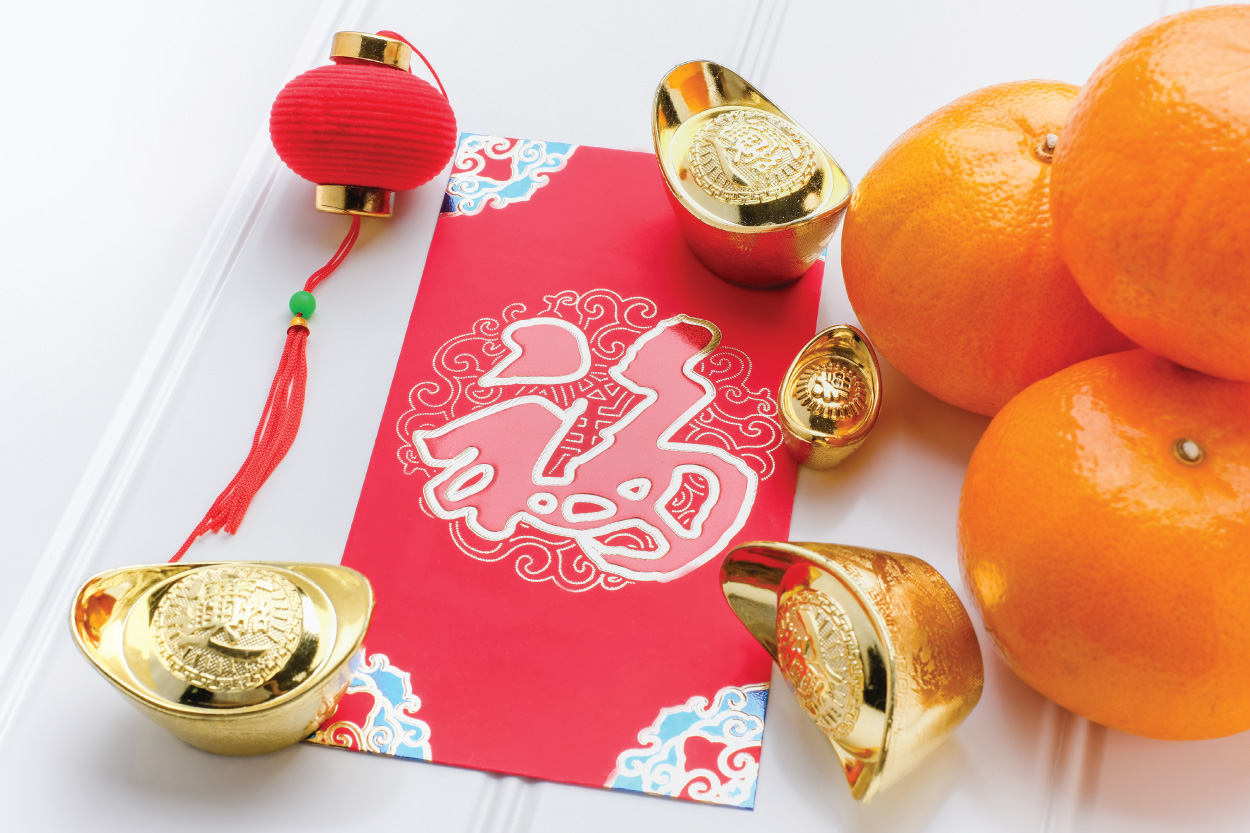
The idea is that the more dumplings you eat during the Spring Festival, the more money you may make throughout the year. (As if we needed another reason to put a few extra dumplings on our plate!)
Pork Potstickers with Szechuan Green Beans
Our delicious potstickers filled with spiced ground pork are impressive while not being intimidating. You see, our recipe includes a short video to show you exactly how to form the potstickers so you can say goodbye to the anxiety and just enjoy the process. We then have you pan-fry and steam the potstickers on the stovetop and serve them with a homemade sweet chili dipping sauce and side of Szechuan green beans with red pepper flakes and toasted sesame oil. If that isn’t yum, we don’t know what is.
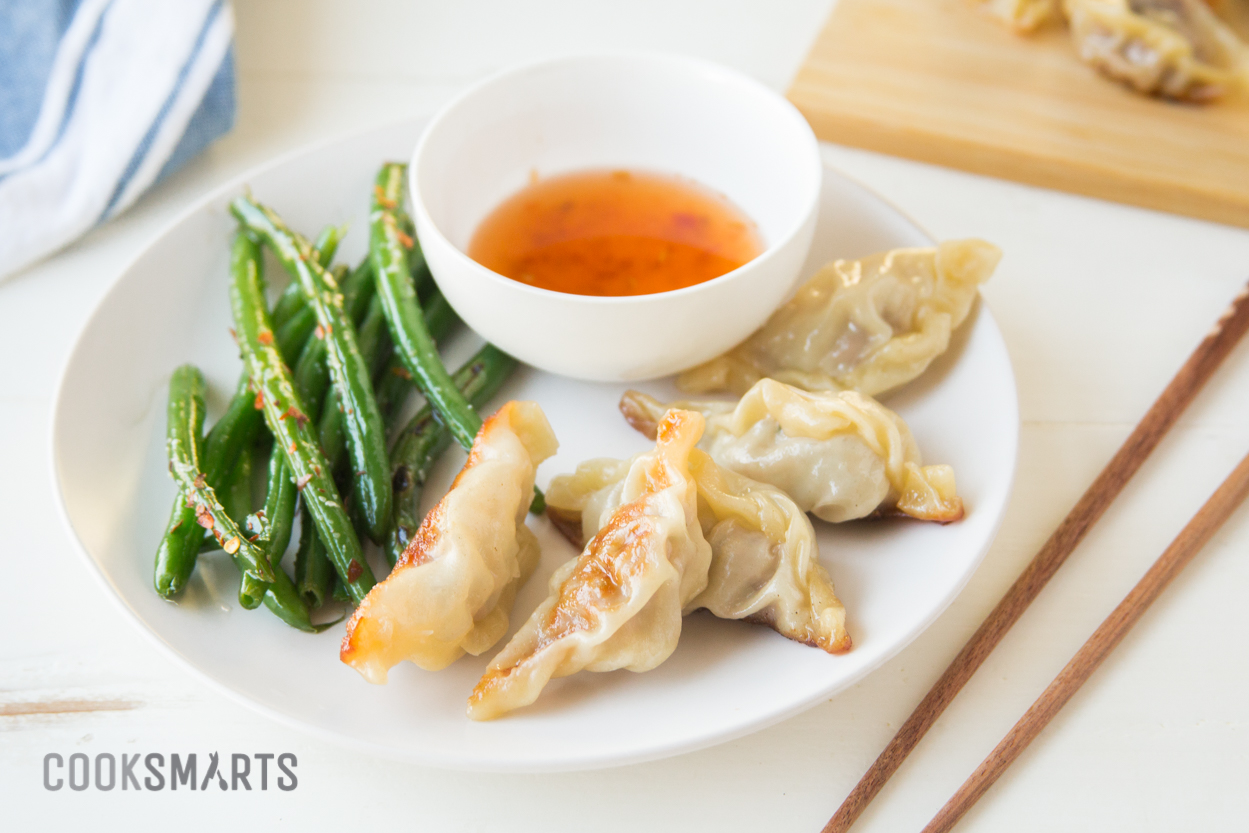
Here are a couple tips for making and serving your potstickers lucky-style this Chinese New Year:
- Make sure to get in a good number of pleats as you close the wrappers. If they end up too flat, it is thought to bring on poverty.
- Even though arranging dumplings in circles can look cool, some believe it means your life won’t go anywhere and will go around in circles instead. So opt for a sleek line of dumplings!
2. Spring Rolls / Egg Rolls: Wealth
Another iconic Chinese New Year food with the same lucky meaning is the spring roll — a.k.a. egg roll (also known to our mouths as YUM). They actually get their name from the Spring Festival and are so frequently eaten because they look like gold bars. If you don’t want to try making them from scratch, simply buy them in the frozen food aisle of many grocery stores and then bake or air-fry them at home. It’s so easy and so, so delicious.
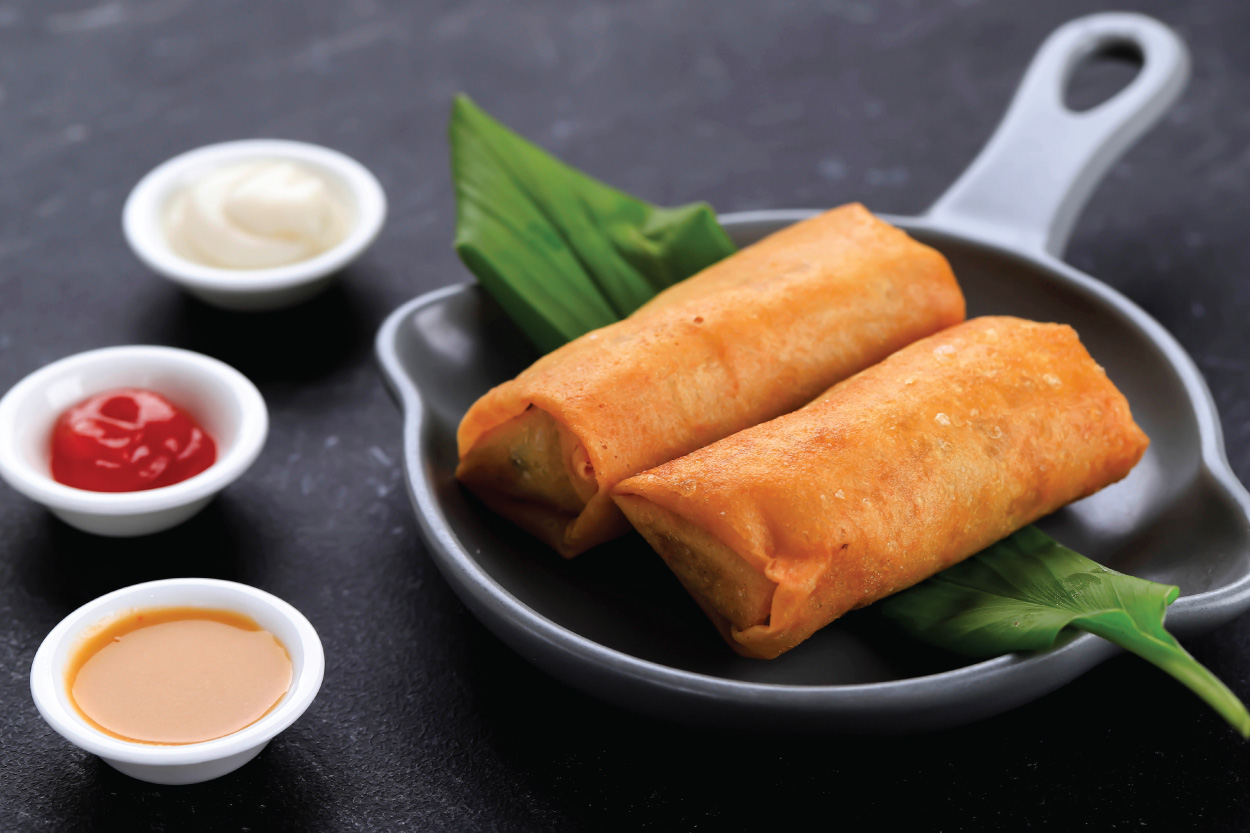
3. Noodles: Longevity
Noodles aren’t only a staple of Chinese cuisine, they also have the symbolism of long life. This has secured them a key spot on a traditional Chinese New Year food list. And since there are so many delicious Chinese dishes that use noodles, it is easy to incorporate them in your celebratory plans this year.
Just make sure not to bring on a bad omen by cutting or breaking the noodles as you prepare them. And if you want to try preparing ‘longevity noodles’ (yi mein or e-fu) that you can get at an Asian market, that’s even better. You can even substitute them in these 2 Chinese New Year recipes that are so easy to make:
Stir-fried veggies and shrimp tossed with lo mein noodles and a flavorful sauce — what’s not to love?! Better yet, this shrimp lo mein recipe comes together in just 30 minutes so you can spend less time in the kitchen and more time around the table with your loved ones.

This Szechuan street food is traditionally very, very spicy — but we dialed it down to medium here (though dial it back up if you love the heat!). Our special sauce features ground pork and common Chinese ingredients, but then adds a tahini twist for a nutty flavor and slightly creamier texture than in many Chinese dishes. However, you can always use sesame paste instead if you can feel your grandma’s disapproving gaze behind you. In just 40 minutes you’ll be ready to pour that delectable sauce over soft egg noodles, sautéed mustard greens, and crunchy peanuts.
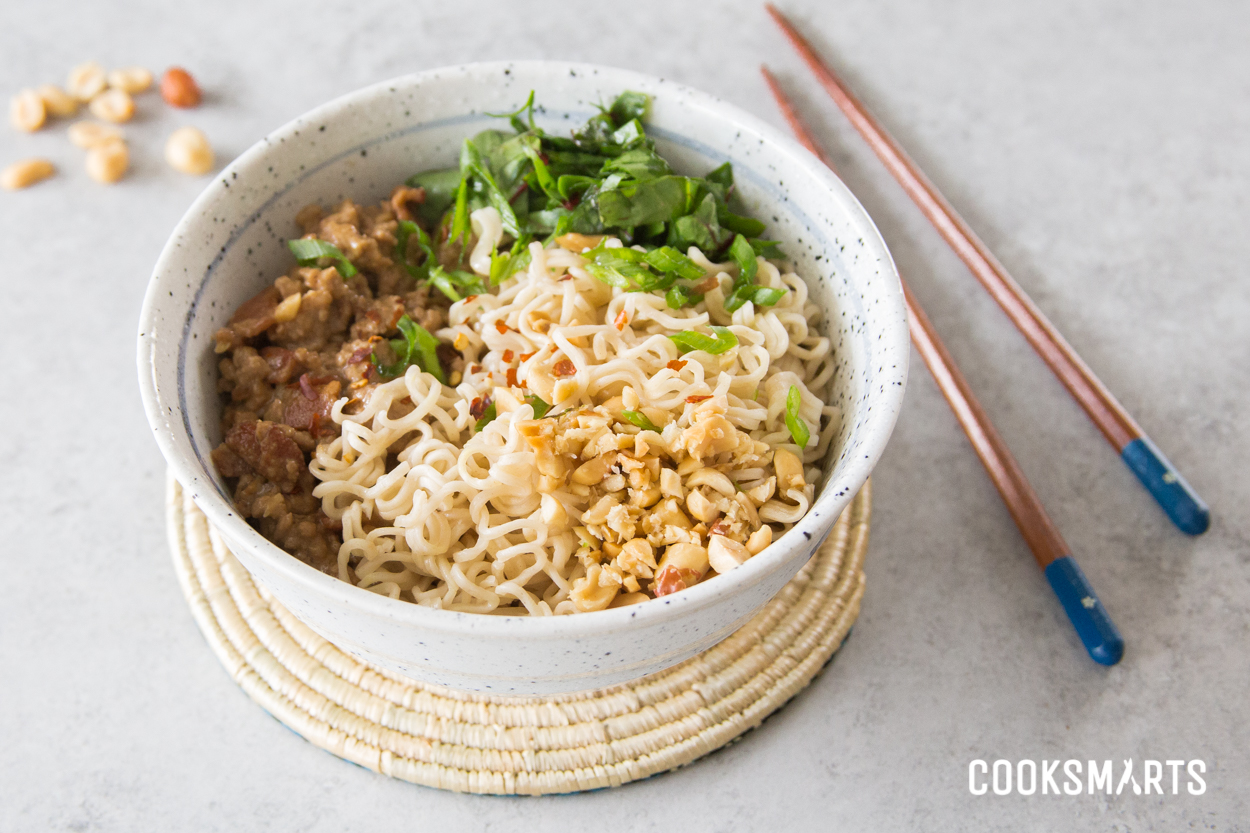
Okay, now that we’ve got your mouth properly watering over noodles, let’s look at another lucky food for Chinese New Year that we’ll cover this year.
4. Mandarins and Tangerines: Luck
It is super common to see mandarin oranges, tangerines, and pomelos everywhere during Chinese New Year because they are lucky on all accounts. Not only do their Chinese names each sound similar to a word with a lucky meaning — like ‘to have’ (jùyǒu) — they also are goldish colored and have circular shapes. Since a circle represents ‘oneness’ and ‘unity’ in Chinese culture, these citrus fruits carry with them the promise of a prosperous and harmonious year ahead.
5. Fish: Surplus
The next stop on our little Chinese New Year food and meaning tour is fish. In Chinese, the word for ‘fish’ (yú) is in the word for ‘surplus’ (shèngyú). This has led to fish symbolizing abundance and hope for surplus in Chinese culture and makes fish dishes the perfect candidates for Spring Festival celebrations.
Here are a couple traditions surrounding eating fish at the New Year:
- Catfish is a great fish to use because the word for ‘catfish’ sounds similar to ‘year surplus’. With our super handy Fish Substitution Guide, you can easily swap in catfish for that extra measure of luck.
- Eat your fish dish last during the holiday and leave a bit on the plate. Having some fish left over at the end can signify surpluses every year. Some traditions even have you eat one half of the fish on Chinese New Year’s Eve and the second half at the beginning of the year.
It is customary to serve a fish whole, but we won’t hold that against you if you aren’t ready for that tradition yet. And don’t worry, our recipe uses a filet…
Ginger-Soy Fish with Vegetable Lo Mein
Our ginger-soy fish features a tangy, slightly sweet sauce that doubles as the sauce for your fish and noodle stir-fry. That’s how we help you get it on the table in only 30 minutes. And since it has that lo mein side dish for longevity, it is doubly lucky meal! Although we used tilapia in our recipe, any white fish will work and you can easily consult our Beginner’s Guide to Cooking Fish to learn how to substitute and cook other fish types and cuts (catfish to make it lucky x3, perhaps?).
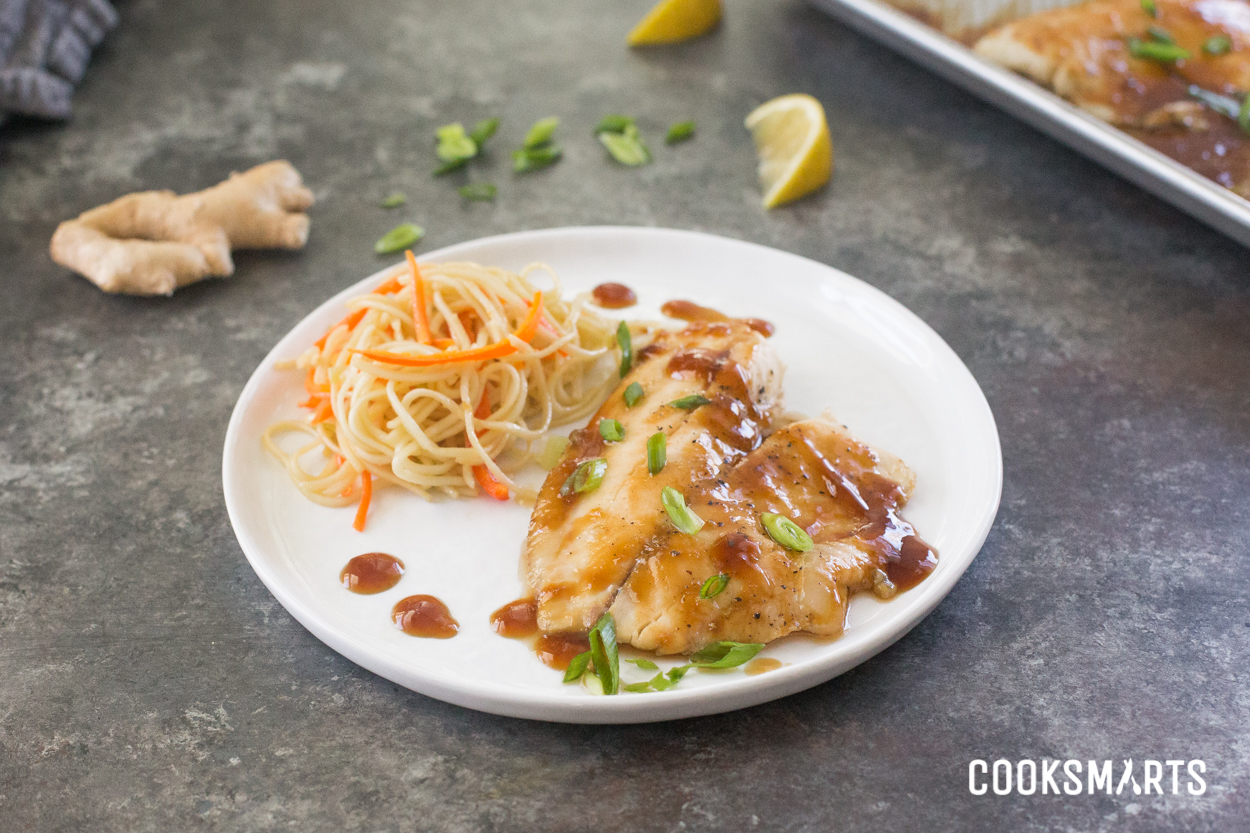
6. Tang Yuan Rice Balls: Reunion
Another food you definitely want to put on your Chinese New Year food list for this Year of the Tiger is tang yuan — black sesame filled sweet rice balls that are typically served in a sweet soup. These little balls of joy symbolize a happy family reunion because their name sounds like a Chinese phrase for ‘reunion’ and ‘togetherness’. Plus, they have that harmonious circle shape. Those meanings make these little rice balls particularly appropriate for celebrating with family during the gorgeous Lantern Festival on the very last day of Chinese New Year.
You can buy frozen tang yuan at your local Asian grocery store and then boil them in a simple sweet soup of water, sugar, and ginger. And if a *sweet* soup sounds off-putting to you, just one bite will convert you forever.
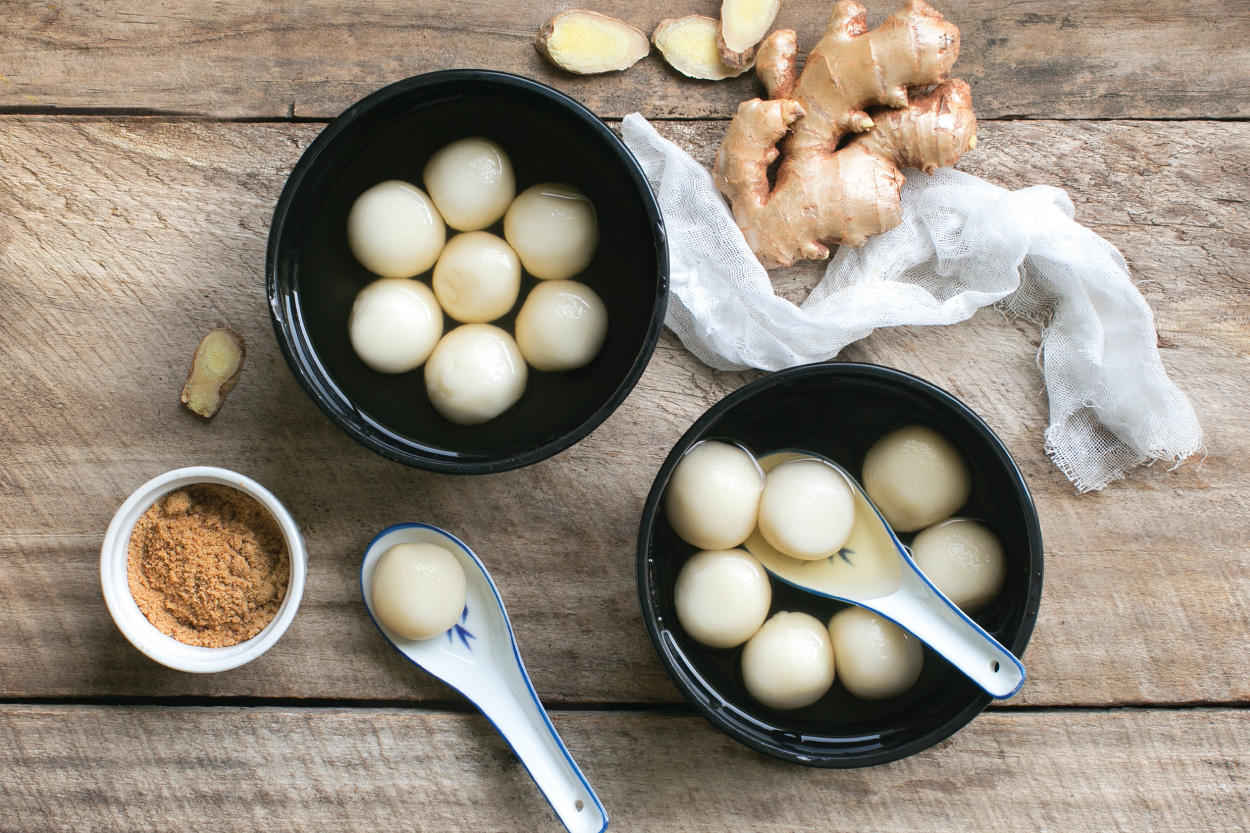
7. Buddha’s Delight: Self-Purification
Another lucky food for Chinese New Year is a vegetarian stir-fry called Buddha’s Delight. Doesn’t the name alone make you want to try it? This dish is traditionally served on the first day of Chinese New Year and gets its name from — you guessed it — Buddhist vegetarian practices. In fact, maintaining a vegetarian diet for the first 5 days of the new year is a self-purification practice.
Some of the common ingredients put into Buddha’s Delight are tofu, carrots, cabbage, glass noodles, mushrooms, and bamboo shoots. With many of the ingredients carrying their own symbolism, the more you add to the stir-fry, the more meaning you add to the dish! And if you want to really follow the tradition, keep alliums (onion, garlic, scallion, etc.) out.
Here is one of our vegetarian stir-fries that you can make as is or use as a template:
This 30-minute, one-pan meal is full of classic flavors and brought to life with a simple yet delicious stir-fry sauce. Our recipe features tofu, carrots, mushrooms, and celery, but you can swap in any of your favorite veggies and add in some of the other ingredients commonly used in Buddha’s Delight.
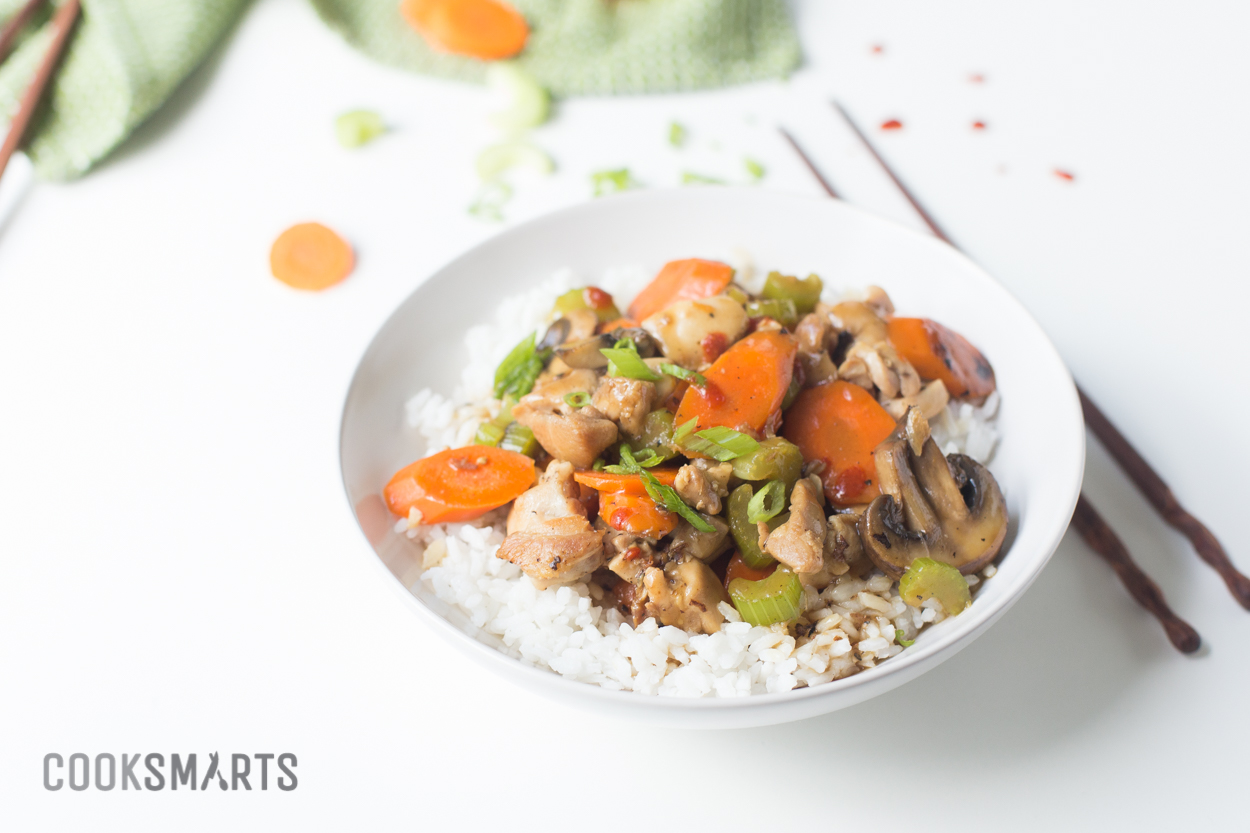
8. Fortune Candy: Luck, Happiness, and Prosperity
The last stop on our little Chinese New Year food and meaning tour is candy. But before you put your kid’s dentist on speed-dial, candy in Chinese culture doesn’t have to be cavity-inducing. Here are 8 (because: luck!) examples of fortune candies that you can try, some of which you can find at any grocery store and others at a local Asian market.
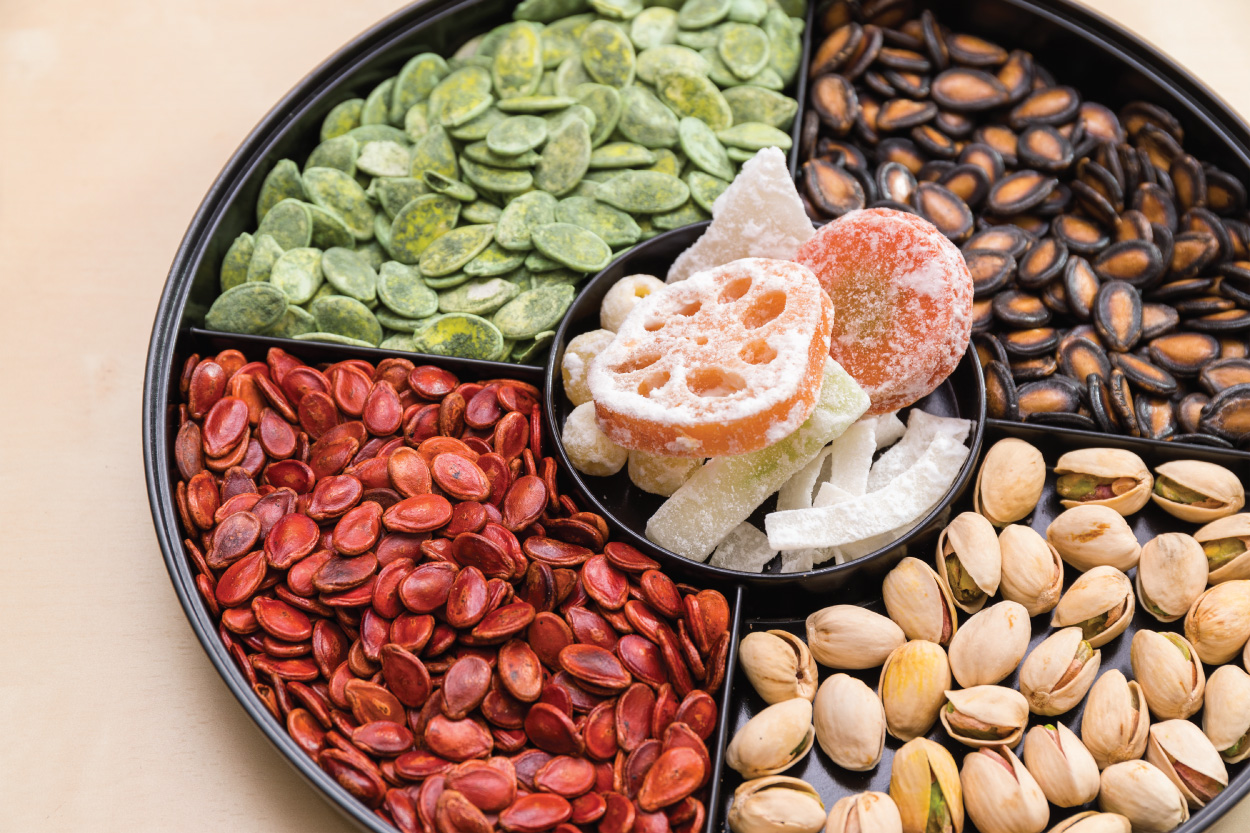
- Candied lotus root → sounds like ‘having every year’ in Cantonese so they symbolize abundance year after year
- Candied winter melon → symbolizes either a good beginning and end to the year and good health and growth from head to toe
- Coconut strips → their name sounds like ‘grandfather-son’ so they symbolize a family bond
- Gold chocolate coins → symbolize good fortune
- Lucky Candy → the red foil is a joyful and lucky color and the candies symbolize a sweet year ahead (you can get some right here)
- Pistachios → their name means ‘happy fruit’ in Cantonese so they signify a happy year ahead
- Roasted seeds → symbolize the accumulation of fortune
- Smiling sesame cookie balls → look like they are cracking a smile and signify happiness and laughter
Whichever treats are chosen to enjoy during Chinese New Year, they are traditionally served in a round box to bring all of the luck together. (But feel free to use whatever bowl or dish you have!)
Bringing all of the luck together is the perfect place to end our Chinese New Year food and meaning mini-lesson. We hope that you have learned a few new things and if you make any of these Year of the Tiger foods for your family, don’t forget to explain the symbolism of the ingredients to your kids, too. We are all about food and education going hand-in-hand!
And if these lucky foods for Chinese New Year have you wanting to learn more about Chinese cuisine and the amazing ingredients it utilizes, you won’t want to miss our free Guide to Chinese Pantry Staples:
Guide to Chinese Pantry Staples
Keep your pantry stocked with many of these core ingredients of Chinese cuisine, and you'll be able to easily make Chinese dishes at home.
Better Than Take-Out!
Enjoy cooking your favorite Chinese recipes at home by keeping your pantry stocked with our list of Chinese staple ingredients!
I acknowledge by requesting this info, I'll be added to Cook Smarts' newsletter list. I can unsubscribe at any time.
Stay tuned for more food education by signing up for our weekly email below. Or sign up for a free 14-day trial of our meal plan service to access dozens of Chinese-inspired recipes!
